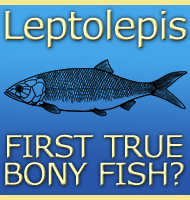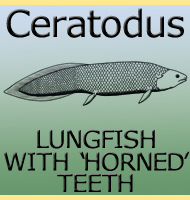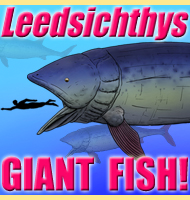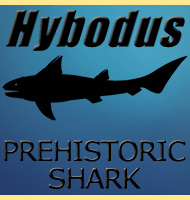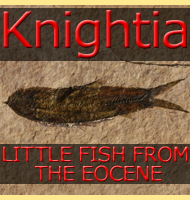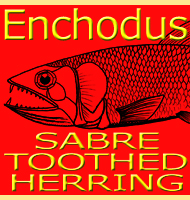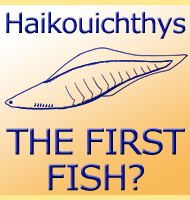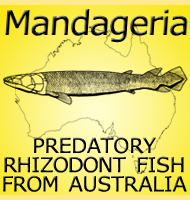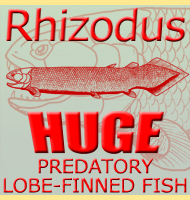


Aspidorhynchus

Name:
Aspidorhynchus
(shield snout).
Phonetic: Ass-pid-o-ryn-kus.
Named By: Agassiz -1843.
Classification: Chordata, Gnathostomata,
Osteichthyes, Aspidorhynchiformes, Aspidorhynchidae.
Species: A. acutirostris, A.
crassus, A. euodus, A. fisheri.
Diet: Carnivore.
Size: About 60 centimetres long.
Known locations: Europe including England, France
and Germany.
Time period: Bathonian to Kimmeridgian of the
Jurassic.
Fossil representation: Many individuals.
In the simplest terms, Aspidorhynchus was very similar to the modern day gar (a.k.a. garpike) fish that inhabit Central and North America as well as the Caribbean, and are noted for being very successful predators. The body is very long and slender with fairly small fins for the size but a fairly well-developed tail. Together the body has a form suited to relying more upon sudden acceleration towards a prey target, closing the distance before it was able to respond to the threat. The snout is elongated and thin, though it remains uncertain as to why it was this form. It may have been an aid in striking at fish either with a direct thrust or a side to side slashing motion like a modern day sword fish. A slashing motion would probably not kill a fish outright, but could potentially stun of grievously wound one so that it could not swim away.
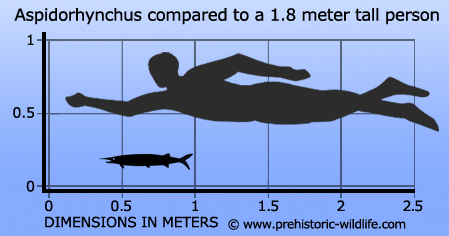
One
of the most fascinating discoveries involving Aspidorhynchus
involves
the pterosaur
Rhamphorhynchus.
With the description published in
2012 by Frey and Tschlinger, specimen WDC CSG 255 is a slab
that contains the remains of a Rhamphorhynchus with
two fish,
Aspidorhynchus and Leptolepides.
The Leptolepides was found within
the throat of the Rhamphorhynchus. The left wing
of the
Rhamphorhynchus is pulled back in an unusual
posture, and it seems
that in life the membrane of the left wing was speared by the long
snout of the Aspidorhynchus.
The
scenario is expected to have played out along the lines of a
Rhamphorhynchus swooping in low to snatch a
Leptolepides from the
water. A roaming Aspidorhynchus then lunged
towards the pterosaur,
spearing its wing with the pointed snout. It is uncertain which
creature the Aspidorhynchus was targeting, it may
have actually been
in the process of attacking the Leptolepides when Rhamphorhynchus
just
got in the way, or it may have even tried for Rhamphorhynchus
as a
target of opportunity. Either way it seems that with the pterosaurs
wing wrapped around the fish’s snout the two sank down to a lower level
of anoxic (oxygen depleted) water. Since pterosaurs couldn’t
breathe underwater, the Rhamphorhynchus simply
drowned, but the
oxygen depleted water of the anoxic zone meant that the Aspidorhynchus
would have suffocated and died before it could free itself from the
pterosaurs wing membrane. The Leptolepides,
still in the throat of
the Rhamphorhynchus while this was happening would
have had no chance
of survival either. The same anoxic conditions that proved fatal to
the Aspidorhynchus however were also responsible
for the high level of
preservation in the specimen.
This
is not the first example of a fish vs pterosaur interaction. An
example of the fish genus Saurichthys
has been found with the remains
of the pterosaur Preondactylus
arranged in a bolus (a pellet of bones
that would be spat out instead of digested) found in close
association to Saurichthys. It is uncertain
however if this was a
case of active predation or scavenging.
Further reading
- On some new genera and species of fossil fishes. - P.
Egerton - 1854.
- The Late Jurassic pterosaur Rhamphorhynchus,
a frequent victim of
the ganoid fish Aspidorhynchus? - E. Frey
& H.
Tischlinger - 2012.
----------------------------------------------------------------------------
Random favourites
 |
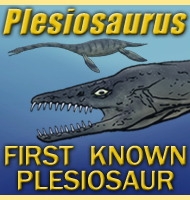 |
 |
